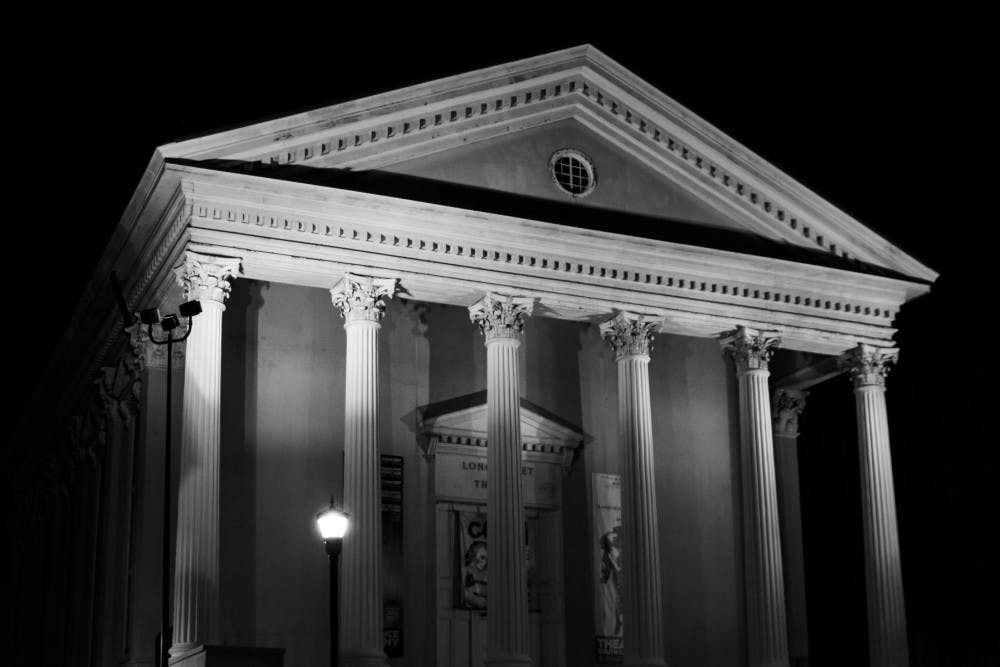Creaking floorboards, ghostly apparitions and flickering lights set the stage for the supernatural sightings at Longstreet Theatre. The theater houses department faculty and puts on year-round productions, but amidst all the drama and costumes, legends of Confederate ghosts and encroaching spirits haunt the corridors.
The troubled history of Longstreet started with its construction in the early 1850s; the roof was blown off twice, causing disastrous acoustic problems and dooming the building to a dubious future.
When war broke out in 1863, Confederates seized control of Longstreet and converted it into a 300-bed hospital despite the protests of university leaders. What is now the “Green Room” on the first floor was used as the morgue, where piles of dead soldiers were left to rot — and eventually haunt.
The complications of the Greek temple style of Longstreet kept up for over a hundred years, as it went through a series of purposes and renovations. In an interview with ETV, Professor Ann C. Dreher said Longstreet was “tailor-made for the appearance of the supernatural.”
Longstreet could be characterized as a place spirits would reside with the walls' mysterious scratches, windows and doors boarded up and an eerie quietness throughout the building.
According to Dreher, students have witnessed “mysterious sounds and sights.” Dreher said the elevator has been known to travel to the third floor late at night when no one is using it, as if a ghostly passenger is hitching a ride. Students have heard footsteps and seen lights flicker when they’re working in the theater late at night.
“This building has a lot of spirit to it,” Dreher said, “I mean if you’re in here for awhile you can feel the history, you can feel things happening.”
While Dreher and others believe in the mysticism of Longstreet, others think it an outdated notion. “[It] seems to be a bit more of a dated tradition in experiencing moments from beyond the grave,” Production stage managerAshley Martin said.
Martin said she was new to the area but she doesn't know of anyone who has “experienced ethereal connections.”
Recent USC Theatre Department graduate Jon Whit McClinton also doesn't believe in the ghost stories, but did admit to Longstreet having a ghost light, which is used in between productions to ensure a theater doesn’t become haunted.
“Even if we don't believe in the superstition, we don't test it," McClinton said.
While some might believe that the ghost light isn't needed, stories like the one Dreher told ETV raises questions. Dreher spoke about students who claimed that when they opened the door to the dressing room they saw a figure standing in the racks of costumes, only to disappear a moment later.
These mysterious encounters could be the presence of deceased confederate soldiers who linger on campus continuing to haunt students, especially the “Yankees” of the theater department, as Dreher likes to tell her students.
In 1976, “The State" called Longstreet a “white elephant.” A beautiful Grecian temple-inspired building that was marred in disaster from the beginning. Could Longstreet’s troublesome attempts at claiming an identity be rooted in the unwelcome presence of dead soldiers, or is it simply due to random misfortune?

